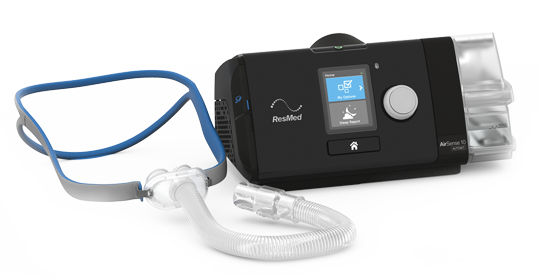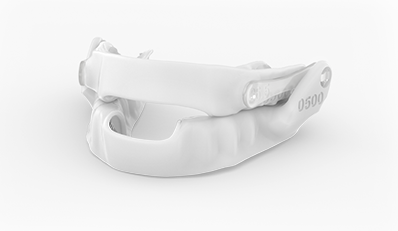Treatment options for obstructive sleep apnea (OSA) include three forms of positive airway pressure (PAP) therapy, oral appliance therapy, and alternative therapy.
Positive airway pressure therapy is the most effective way to treat OSA. By creating a ‘pneumatic splint’ for the upper airway, PAP therapy prevents the soft tissues of the upper airway from narrowing and collapsing. Pressurised air is sent from a therapy device through air tubing and a mask to the upper airway.
Patients with severe sleep apnea are able to experience restful sleep with positive airway pressure therapy. PAP therapy can be delivered in a number of ways:

An oral appliance, also known as a mandibular repositioning device (MRD), is a first line treatment option for mild and moderate obstructive sleep apnea and a second line treatment option for severe OSA. OSA patients who are non-compliant with or refuse positive airway pressure therapy often use oral appliances as an alternative therapy. Some OSA patients also prefer oral appliances because they are non-invasive, easy to wear and easy to transport.
Oral devices work by holding the lower jaw in a forward position during sleep to reduce collapse of the airway and expand space behind the tongue, which helps prevent apnea and snoring.

Surgery is also an option for treating obstructive sleep apnea (OSA), though it comes with associated risks and complications. Uvulopalatopharyngoplasty (UPPP), the most commonly performed surgical procedure for OSA in the United States, is effective in reducing snoring initially. Over the long term, UPPP cures snoring in 46% to 73% of patients who have had the surgery.1
Untreated obstructive sleep apnea (OSA) can lead to a host of complications and serious health risks. Finding the right treatment for your patient can improve compliance rates and diminish associated risks.

Featuring wireless
connectivity, ResMed’s sleep and respiratory care devices transmit patient therapy data to AirView, for remote monitoring and customised settings.
.jpg)
ResMed has treatment options for throat snorers who have sleep apnea, as well as throat snorers who don’t.

Adaptive servo-ventilation (ASV)* is an appropriate choice for treating most of these more complex patients.
Kashima ML (2007). Selected disorders of the nose and throat: Epistaxis, snoring, anosmia, hoarseness, and hiccups. In NH Fiebach et al., eds., Principles of Ambulatory Medicine, 7th ed., pp. 1849–1864. Philadelphia: Lippincott Williams and Wilkins.
Kashima ML (2007). Selected disorders of the nose and throat: Epistaxis, snoring, anosmia, hoarseness, and hiccups. In NH Fiebach et al., eds., Principles of Ambulatory Medicine, 7th ed., pp. 1849–1864. Philadelphia: Lippincott Williams and Wilkins.